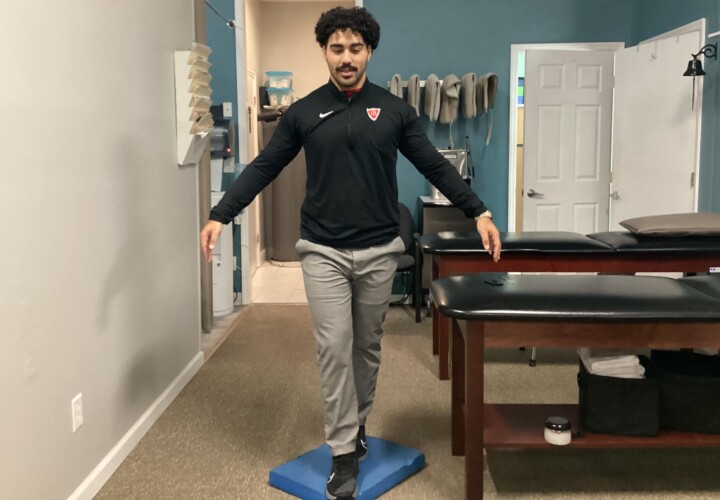The internet is filled with quick fixes for your dizziness, and man do I wish all of them worked every time! Unfortunately, there are actually very many causes to dizziness, only some of which classify as true vertigo. Physical therapy can help with many of them! But how do you know if what you have is positional vertigo, and how does that help your therapist and you?
Let’s start by reviewing some medical definitions. Dizziness is our catch all term, it means that our brain feels off. You may experience light-headedness, imbalance, “wooziness” or “haziness” or feel like the world is spinning around you literally, just like when you were a kid and spun until you fell over and then watched the clouds go in circles. While “disequilibrium” is a very accurate term for the feeling of imbalance we attribute to many types of dizziness, true vertigo only applies to that final definition. If you do not see the world literally spinning, while you may have dizziness, you do not have vertigo (which may be a very good thing!)

Great, well now we’ve narrowed down that you have vertigo because the world is spinning, why on earth does that matter?! Well, because there is a specific kind of vertigo, known as positional vertigo, that can actually be fixed very easily, sometimes by just one treatment with a skilled practitioner! Positional vertigo means almost exactly what it sounds like: if you put yourself in a specific position, it triggers your vertigo. This is different than what we experienced as children or what some people experience after an ear infection, where quick movements of the head are the trigger. If you roll over in bed, and no matter how slowly and carefully you did it, the world goes round and round, it means position is the factor that is causing your vertigo!
This usually happens because some of the natural debris in our vestibular organ has accidentally drifted into some of the canals that detect movement. These canals are filled with tiny hair cells that are supposed to feel when fluid moves over them as we quickly move. If debris gets into them and we lie in a position that allows gravity to move that debris, it can also roll over those hair cells, triggering a reflex we have to reposition our eyes as a response to movement. Our eyes are literally unconsciously spinning in our heads, just because gravity is pulling around some natural debris!
The good news? That debris is usually not too hard at all to clear out! If it got in there in one position, certain maneuvers can actually place the debris on an exit path to drain back to where it belongs in the body! Once the debris can no longer roll over the hair cells, it cannot trigger (or mistrigger) that reflex anymore, and you should be symptom free!
The lesson here? If your world is spinning, pay close attention to when! Fast movements vs slow, lying or looking in one position, these things can help a therapist determine if this quick and easy treatment is right for you!
